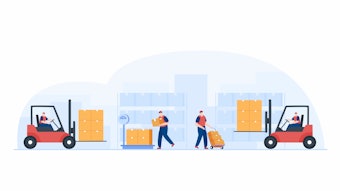
Following Russia’s invasion of Ukraine, the international community moved quickly to enact sanctions with the intent of weakening the Russian war effort and putting pressure on the country to cease their actions. Over 600 corporations have said they will no longer do business in Russia or significantly curtail their activity there, including Apple, Nike, Accenture, Airbnb, and IKEA, furthering the effort to end the conflict.
Even several weeks after the conflict began, the pace of sanctions has only accelerated—in some cases, they’ve also become more targeted at high-ranking members of Russian inner circles. As Russian oligarchs scramble to move their assets to other countries in hopes of protecting them, or try to obfuscate their ownership stakes, it’s becoming increasingly tricky for suppliers and procurement organizations to achieve full insight into just who they are doing business with.
Companies are aware of the significant downsides to doing business with sanctioned organizations or individuals—from fines that can reach over $1 billion to the damage that can be done to a company’s reputation, both externally and among their employees—but what’s less obvious is what they can do to make sure they aren’t working with any “blocked” entities. It can be hard to keep tabs on the ownership and status of every organization a company is connected to, especially down the entire supply chain. This is doubly true for procurement organizations that work with dozens or hundreds of suppliers, each with their own sources and ownership structures.
Procurement companies need to provide visibility into their partners and sources so they can assure clients that their spend isn’t making its way to a sanctioned company. They also need to make sure they’re steering clear of buying from companies that would put them in violation of the law.
Click here to hear more about procurement and the Russian/Ukraine war:
A moving target
Sanctions across the international business world are not a new occurrence, but what’s unique right now is how quickly the environment is evolving. So what can procurement companies do to stay in the clear? OFAC screening is a helpful first step when it comes to identifying problematic companies that are sanctioned (or have an owner that is sanctioned), but that screening can overlook certain company configurations and it doesn’t help procurement companies address sanctioned elements once they’re identified.
Gaining visibility into the businesses you’re working with is just the beginning, though; action has to follow, and quickly.
Achieving visibility and taking action
Managing sanctions compliance and addressing anything running afoul of these rules might sound like a hard process to get in place, but if you break it down into the various aspects of what’s needed, it’s a little easier to grasp and act on. Let’s look at the main goals procurement companies should have when searching for a solution:
- Ongoing monitoring and scrubbing of third-party portfolios: With firms becoming increasingly global, OFAC lists are usually not enough to get a truly accurate lay of the land. Other equivalent lists that are published by other countries are often required to get a full picture of all sanctioned parties across the globe. Ongoing monitoring is necessary to maintain an accurate picture of a company’s vendors, partners, and beyond. Businesses are acquired or have ownership changes all the time, and if a check is done only during the onboarding of a business, these changes that might result in a newly unacceptable partner could go by unnoticed. With sanctioned companies rapidly redistributing their assets in order to try and circumvent sanctions, a system that monitors for ownership changes is a reliable way to be aware when an action needs to be taken. And with automated functions, not only can more ground be covered in these checks than if they were done manually, the chance of “human error” leading to a multi-million dollar fine is greatly reduced as well.
- Screening for beneficial owners: Sometimes, it won’t be as easy as finding a business partner by name on a list. “Beneficial owners,” direct and indirect ownership, and related entities can make a company “blocked” by current sanctions, and any consultants or automation should be able to flag ownership structures that run afoul of the OFAC 50% rule
- Blocking payments: Every additional payment to a sanctioned entity could increase the likelihood, or severity, of a penalty. Procurement companies should adopt a screening process, like the one mentioned above, to flag problematic suppliers and partners and take steps to block firms that don’t pass the screening. Time is a factor here; a systematic process to quickly block payments that would otherwise be sent to sanctioned companies is valuable. Here too, automation comes in handy, to block payments immediately after the system identifies a company that requires action.
These above goals can be achieved in a few different ways. One was is to utilize expert consultants. Another is to have knowledgeable employees do the heavy lifting by checking lists and digging into partner and vendor ownership (and then connecting with payment and legal departments as needed based on what they discover). A third way is to use third-party lifecycle management platforms that can automate significant parts of the process. Procurement teams looking to bring on a solution or partner to help with sanctions compliance should ensure that each of the above is possible in any prospective plan.
Keeping ahead of sanctions penalties
Sanctions penalty enforcement fluctuates from year to year, but it’s not the type of thing procurement companies should ignore and just cross their fingers that no one will look closely at their business dealings. The gravity of the Russian invasion in Ukraine, and the international outcry against it, suggests that these penalties will be enforced as diligently as they ever have.
Gaining visibility into, and then control over, the full complexity of upstream source relationships is essential for procurement teams in 2022. Whether through an automated lifecycle platform or careful, manual research into organizations a company does business with, the onus is on procurement teams to get a process in place for identifying blocked entities in their system, stopping payments to them, and avoiding onboarding any more in the future.





























